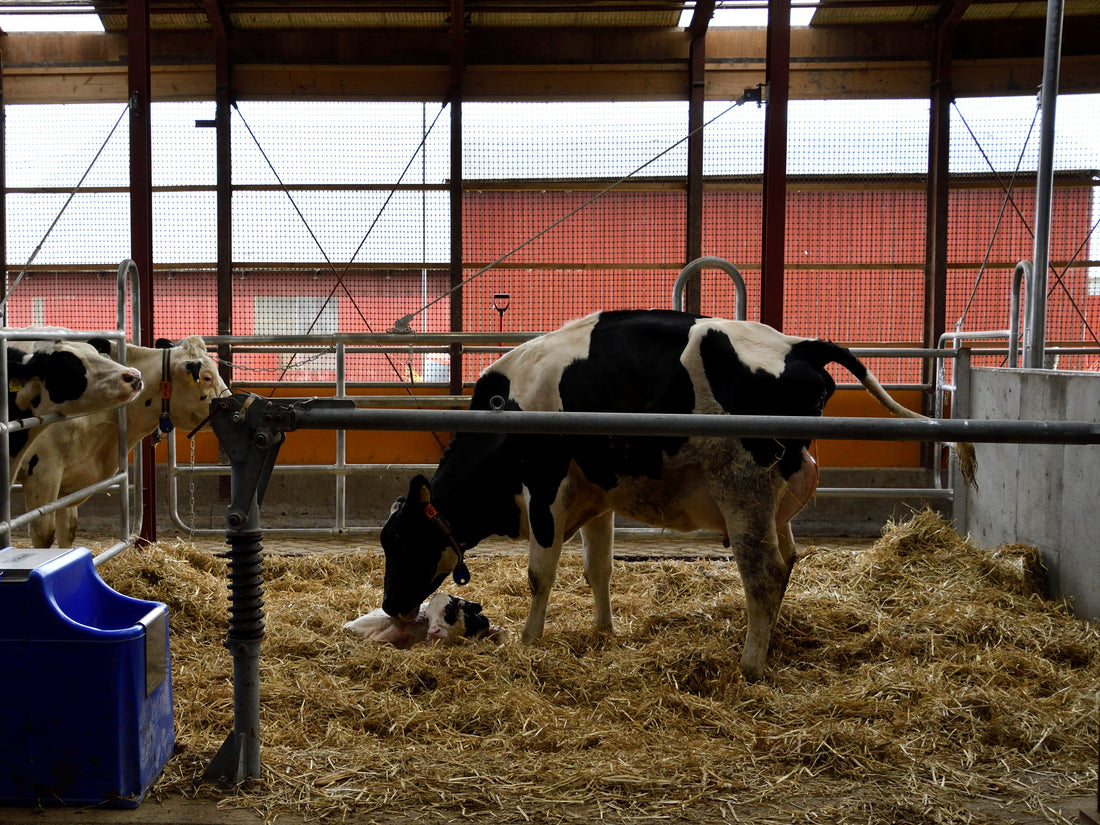What is the right time to separate a calf from the mother?
Immediately after calving, the next day after calving or closer to the weaning? There seems to be as many opinions as there are people to answer. And it seems that we still haven’t found “the right answer” to this question.
Other farmers separate immediately after calving but others want to keep the cow and its calf together for a longer time. The consumers opinions have also been interviewed and it seems that most of them haven’t realized that the calf might be separated from the mother very early. The consumers feel like it’s not a good thing to do.
Lenght of the cow-calf contact
There are two very comprehensive review-articles about the optimal length of the cow-calf contact in the 2019 issue of Journal of Dairy Science. These two articles have gathered up the latest knowledge of the effects of early separation versus prolonged calf-cow contact. It’s actually quite confusing to realize how little we know about the subject.
There are few scientific articles about the effects of the length of the cow-calf contact on the behavior, welfare, growth or milk yield of these two animals. The experimental designs were so inconsistent across studies, that it was not easy to compare them and no precise conclusions could be made.

Photo by Maria Pitkäranta
The cow and the calf together form a very complex entity. Some measures promote immediate separation and some measures promote prolonged cow-calf contact. Studying cow-calf contact means examining two animals which are in totally different physiological state. The first weeks after calving are critical for the mother and its milk yield. The first months are also very important for the calves growth and development. It seems really complicated to evaluate the effects of the cow-calf contact length during a time when both individuals experience big and continuous changes in their physiological state.
Many farmers have noticed that when separating the cow and a calf quickly, the acute stress seems to be milder when compared to longer contact time. The calf and the mother can make noise and seem more stressful for a couple of days after separation when they have been together for a longer time.
Free stall barn has it's benefits
However, the research shows that being together longer makes the calves more social and reduces abnormal behavior. The calves also grow better during the nursing period. In a free stall barn, it is beneficial for the cow to be more social in the group. Longer nursing time has been found to be better for the cows also because it reduces the risk of mastitis. It is interesting to notice that there is no consistent pattern observed for calf immunity or mortality when comparing the time of separation.
More research about prolonged cow-calf contact is needed
We who are working with the milk producing sector are still doing the daily routines even though there are no clear answers to this burning question. We might have strong opinions on which is the best way to raise our calves but sometimes it’s good to think about other possibilities and how to do them in practice.
We in 4dBarn follow the latest scientific research and the discussion around the welfare of dairy cows. When scientific research brings us more knowledge, it is time to apply it in practice. Before that, we must keep our minds open. We have a lot to learn about what is the best way to raise our calves!
Sources:
Beaver et al 2019. Invited review: A systematic review of the effects of early separation on dairy cow and calf health. Journal of Dairy Science 102:5784-5910.
Meagher et al 2019. Invited review: A systematic review of the effects of prolonged cow-calf contact on behavior, welfare, and productivity. Journal of Dairy Science 102:5765-5783.


